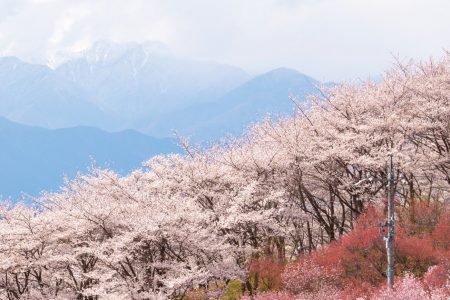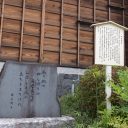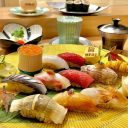
Have you ever used a tsubo vase for Ikebana?
The other day, I found some tsubos left unused for a long time at my parents’ house where I had not come back for a while. They are usually displayed on the shelf of the alcove (tokonoma) or placed away in a storeroom. By the way, do you know what kind of shape a tsubo has? Generally, a tsubo is defined as a container that has a narrow mouth and a round and swollen body. To be more specific, our school defines tsubo as “a container with a mouth diameter larger than that of a fist and a body larger than about 1.5 times that of a fist” as a reference. You may have fewer chances to see the tsubo compared to other containers.
In Japan, there are many plants with elegant branches such as the Japanese rowan, Enkianthus Perulatus, and Euonymus. I feel it is not too much to say that we have arranged flowers for a long time to show these expressive branches beautifully. In Sydney, there are not so many kinds of branches suitable for Ikebana. Therefore, we need the so-called “Tonal Colour”, a technique that adjusts the seasonal colors to express the atmosphere similar to Japanese branches using trees native to Australia. Although it’s a bit of a professional method, the students in my class enjoy facing this challenge.
Tsubo arrangements need techniques such as “fixing by crossing,” “horizontal single-bar fixture,” and “nailing” to fix the materials inside the tsubo. When you have a chance to make Ikebana with tsubo, I recommend you not to hesitate to stick to such techniques, and to make the most of the stately features of the solid-looking tsubo. Just fix the branches firmly in the vase and compose by making the best of the space extensively. If, instead of offering your family members a set of arranged flowers bought in a shop, you occasionally arrange flowers for them yourself, they will feel much happier with your loving attitude. Why don’t you try it?
Author

Tada Reishu
Web: https://www.7elements.me/
Facebook: fb.com/yoshimireishu
Instagram: @yoshimi_ikebana












